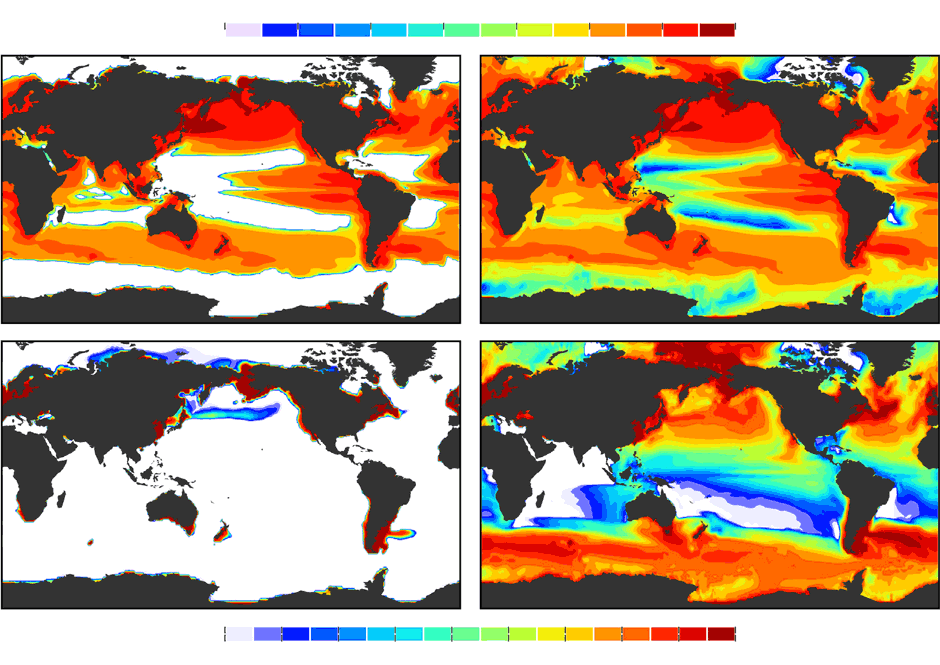September 5th, 2016
Key Findings
- The abundance and distribution of fish biomass in the ocean is estimated, by coupling a fish food web model to ocean physics and biogeochemistry simulations covering the past 60 years.
- Integrating fish food web dynamics into GFDL’s Earth System Models and uncovering the role of movement in shaping large-scale fish distributions are key steps in developing a large-scale predictive capacity for fish.
- Fish distributions and the structure of the marine food web is found to be highly sensitive to movement.
James R. Watson, Charles A. Stock, Jorge L. Sarmiento. Progress in Oceanography. DOI: 10.1016/j.pocean.2014.09.001
Summary
Nearly 1 billion people worldwide rely on fish as their primary source of protein. In the United States, commercial fisherman caught nearly 10 billion pounds of fish in 2011, contributing approximately 70 billion dollars to the National Economy and supporting over 1 million jobs. Understanding the impact of climate, pollution, fishing and other pressures on global fisheries yields is thus essential for food and economic security.
In this study, we estimate the abundance and distribution of fish biomass in the ocean by coupling a size-based fish food web model to retrospective ocean physics and biogeochemistry simulations covering the past 60 years. We find that choices for the movement rules applied to fish – chasing prey and avoiding predators – have profound effects on fish distributions and the structure of the marine food web (see Figure). These effects are often ignored in other efforts to estimate global fisheries yields, which rely solely on regional plankton productivity estimates.
Integrating fisheries food web dynamics into GFDL’s Earth System Models and uncovering the role of movement in shaping large-scale fish distributions are key steps in developing a large-scale predictive capacity for fish, but there is much more work to be done. Future plans include rigorous assessment the ability of this model to recreate past observed fluctuations in fisheries yields, integration with fishing models, and development of benthic fisheries model. An ultimate objective of this work is development of quantitative forecasts and projections of fisheries yields over global scales.
Funding for the lead author of this work was provided by the Nippon Foundation through the Nereus Program, a multi-national effort to predict the future state of the ocean and its fisheries in 2050.



